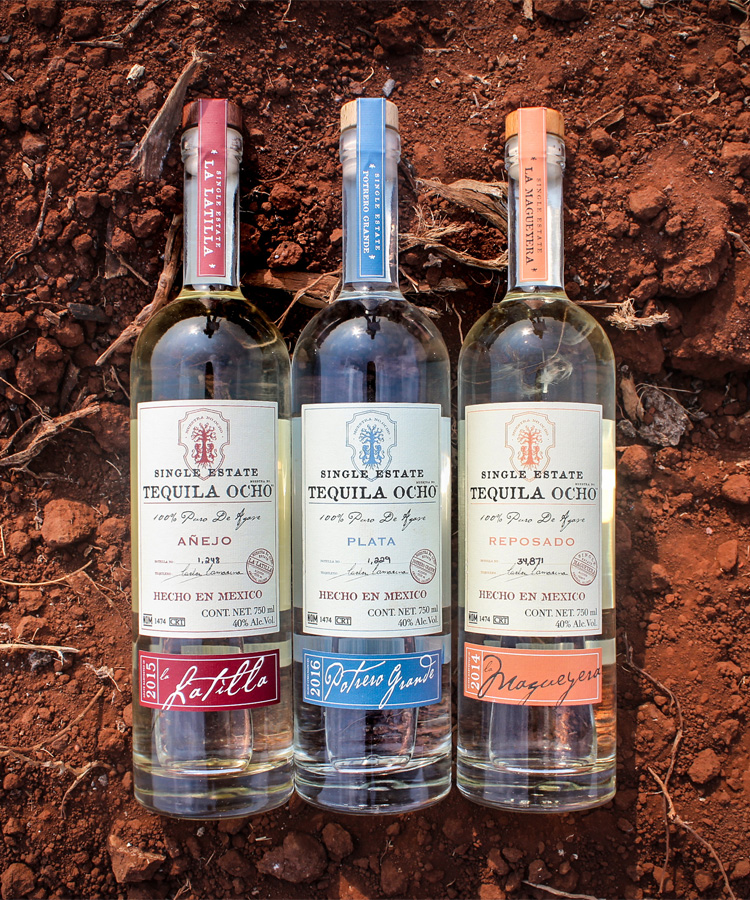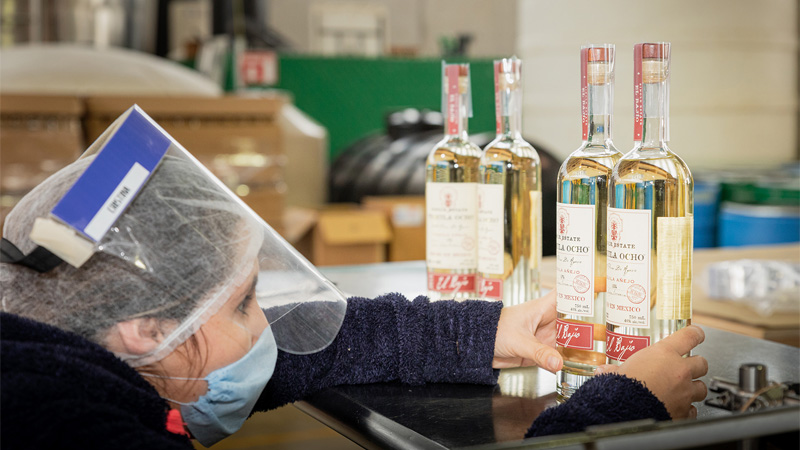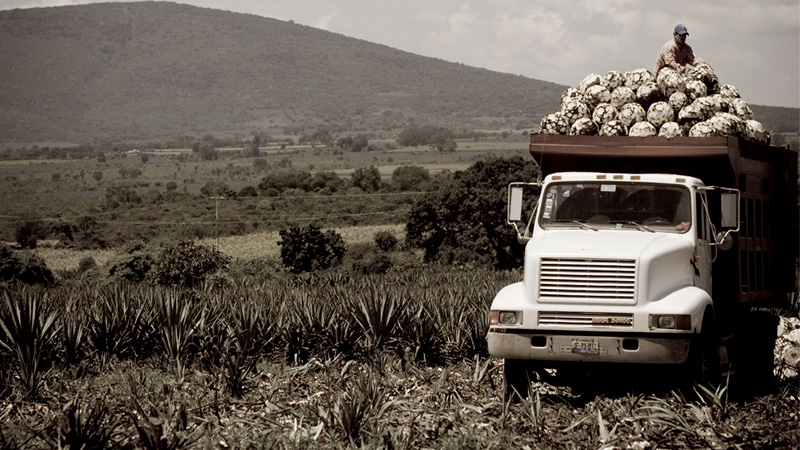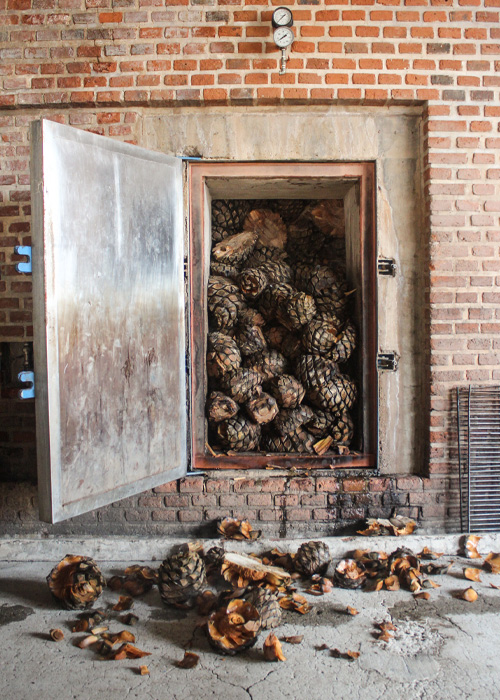
Step one of tequila connoisseurship: Drink it. Repeat.
Step two: Begin to grasp the many complexities and nuances of one of the world’s greatest spirits.
The gap between these two phases can be quite wide — if not only for one too many sips, but because it can actually be quite difficult to find good information about where Mexico’s most famous distillate comes from and even what its ingredients are.
But as tequila experts like Lou Caruso, who reviews and writes extensively about tequilas at LongIslandLouTequila.com, will tell you, the specific place where the blue agave for tequila is grown has a huge impact on the final product.
“That terroir is very important for tequila,” Caruso says. “The climate, rain, altitude, amount of sun [exposure], salt air, soil, et cetera, all affect the growing and profile of the agave.”
In order to best express these distinct places, Tequila Ocho uses nothing other than blue agave grown in its family-owned fields, fresh mineral water from its own spring, and natural airborne yeast. “At Tequila Ocho, transparency is one of our most important values, and as such we are very open about our production process,” says Jesse Estes, Tequila Ocho’s brand ambassador. “Other producers will often use additives either during the production process itself, and/or after distillation or aging. Ocho does neither.”
There are two main regions in Mexico’s Jalisco where agave is grown: the highlands, known as Los Altos, and the lowlands, sometimes called “Tequila Valley,” which are closer to the city of Tequila itself. These areas produce tequilas with dramatically different flavor profiles, says Caruso.
“In the lowlands, there is darker, almost black, volcanic soil, which gives a bolder, more peppery, earthy, herbal, and grittier profile,” he says. “In the highlands, which are quite a distance away, the agaves grow bigger and are fruitier because of the rainier, more diverse, and drastic climate where frost causes the roots to dig down deep to survive, giving a more mineral, sweet, and easier-to-drink profile.”
Recognizing the importance of these two primary growing areas can be a big step to understanding the intricacies of Mexico’s premier spirit. But to really understand the nuances of tequila, you have to dig into the corners of these large regions, the differences in which can be significant.
While many producers are vague about where their agave comes from, Tequila Ocho produces batches of tequila that are sourced from single fields, or “ranchos,” and helpfully includes those details, as well as the year of production, right on the label.
These one-of-a-kind bottlings offer insight into weather and climatic changes that occur from year to year and the differences between growing areas and regions, much like single-vineyard wines, according to Estes.
“All of our agaves are grown in Los Altos de Jalisco, but the terroir can vary significantly within that region,” Estes says. “As an example, one of our recently harvested fields, El Bajío, is located over 7,000 feet above sea level. In contrast, La Magueyera, which was harvested in 2014, sits almost 2,000 feet lower in altitude. The soil in these two fields is strikingly different, as are many other elements of the terroir in each.”
Although the agave from both fields went through the same production process, the resulting spirits are distinguishable to an acute palate. “El Bajío Plata is very fresh, fruity, and peppery,” Estes says, “whereas La Magueyera Plata is more earthy, vegetal, and herbaceous.”
While Tequila Ocho uses agave from various parts of Los Altos, most of its fields are located in the highlands’ hailed “Golden Triangle,” a roughly 65,000-acre growing area situated between the towns of Atotonilco, Jesús María, and Arandas. But even within the Golden Triangle, the small idiosyncracies from field to field can have an immense impact on the spirit’s flavor.
“The microclimates and elevations vary so much there that this creates differences in the [flavor] profiles,” Caruso says. “The extra rain and temperature variation give a more floral presence in the highlands, especially around the area of Arandas.” The land surrounding the small town of Arandas at the northern point of the Golden Triangle is known for producing legendary tequilas, including several bottlings from Tequila Ocho. Tequila Ocho’s distillery, called La Alteña, is located just outside Arandas.
Giving a pure expression of these places is crucial to Tequila Ocho’s distillers. And while there is an array of legally permitted additives in mass-market tequilas, Ocho abstains from all of them.
“Any non-blanco tequila can have caramel coloring, glycerin, oak extract, and/or sugar syrup without stating it on the label,” says Eric Zandona, author of “The Tequila Dictionary.” “In general, any large brand that sells aged tequilas — reposado, añejo, extra añejo — probably adds some flavorless caramel coloring to ensure the liquid in one bottle looks the same as the next.”
Since these additives are not required to be listed on labels, Estes recommends that drinkers use resources like the list of verified additive-free tequilas from Tequila Matchmaker. Knowing what’s in your tequila, he says, is just as important as knowing where your groceries come from.
“Provenance and traceability are increasingly important to consumers today,” Estes says. “Knowing where our food and drink comes from is becoming more and more of an expectation for premium products.”
The next time you enjoy your favorite tequila, keep an eye on the regions and the fields where its agave was grown. Who knows? You might take your own tequila connoisseurship to the next level. With Tequila Ocho, everything you need is right there on the label.
This article is sponsored by Tequila Ocho.



